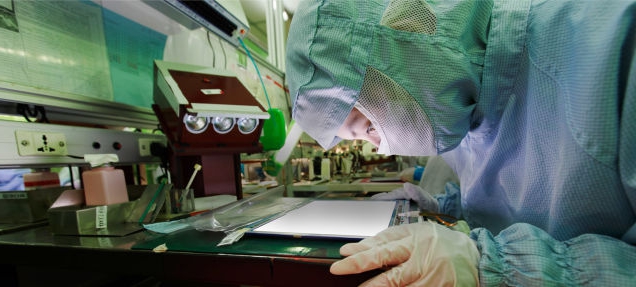Assessment of jobs (special) is a process that excites absolutely all employers, regardless of the organizational form of the enterprise. The exception is, perhaps, only individual entrepreneurs without staff. Therefore, it is so important to know the answers to questions regarding its proper organization, implementation and application of the results.
Certification of jobs: what is it?
Recently, this concept has been replaced by a new one, now it is called a special assessment. working conditions (abbreviation - SOUT). Corresponding changes affected the Labor Code of the Russian Federation. This procedure involves a set of measures carried out sequentially to identify dangerous and (or) harmful factors in the workplace, as well as during the labor process. With a subsequent assessment of their level of impact on the employee, taking into account the degree of deviation of the actual indicators from the established standards in the field of working conditions and the possibility of using protective equipment (collective or individual).

A special assessment (certification of workplaces) is carried out in strict accordance with the provisions of the law of federal significance No. 426 adopted in 2013 (hereinafter - the Federal Law).
Who carries out the procedure?
Financing and conducting special assessment is included in the circle employer responsibilities according to the Labor Code of the Russian Federation (Article 212) and based on part 1 of Article 8 of the mentioned federal law. The procedure is carried out by all organizations without exception, as well as individual entrepreneurs who hired employees. That is, in the sense, by all who are the employer. If an individual entrepreneur does not have employees, then certification is not necessary.

It is important to remember that certification of workplaces is a joint activity of the employer and a special organization (sometimes several). This service is legally executed using a civil law contract.
Requirements for the organization conducting the SOUT
- Special assessment activities in the organization's charter documents should act as the main or one of those.
- The staff of the company of experts should be at least five people, officially registered under an employment contract, who are holders of a certificate (permit) for performing special assessment work. This number includes one specialist with higher education, specialty doctor occupational health, or general hygiene, or sanitary-hygienic laboratory research.
- It is mandatory that there is a testing laboratory (center) acting in the organization as a structural unit and having passed the accreditation procedure in authorized bodies.
The requirements for experts are defined in article 20 of the Federal Law. At the federal level, the authorities (executive) maintain a special register. It lists all organizations eligible for the JUT, as well as experts conducting special evaluations.
What is an employer entitled to?
Legally, his legal status is enshrined in Art. 4 Federal Law. Thus, the certification of jobs according to working conditions can be not only according to the plan (once in 5 years), but also unscheduled. The employer has the right to demand from the organization involved in the special assessment, justification for its results, as well as documents that confirm its compliance with the requirements set forth in Article 19 of the Federal Law.

The actions or omissions of the certifying company, the results of the audit, in case of disagreement with them, can always be appealed in court.
Employer Responsibilities
- Conducting scheduled and unscheduled inspections in cases specified by law.
- The company, which will conduct the SOUT, provide all the necessary and required documents, as well as information that is provided for by the civil law contract and characterizes working conditions and gives explanations regarding certification.
- Do not intentionally narrow down the range of issues that must be clarified during the special assessment that affect its conclusions.
- To familiarize the employee with the results of the SOUT under the signature directly at his workplace, as well as to give him the required explanations on the procedure for its implementation.
- Taking into account the results of the assessment, carry out certain activities that are conducive to and aimed at improving the working conditions of employees.
Organization implementing JTS: what should be done?
It is worth mentioning right away that at the initial stage she can refuse an expert assessment in the manner prescribed by law if certification of workplaces can cause a threat to the health or life of an employee of this organization. Like any other legal entity, it can write out orders or other acts of a regulatory and legal nature, and they can be appealed in the approved order.

The direct responsibilities of the organization involved in the implementation of the TOC include a number of actions:
- Providing substantiating results of the assessment of facts (at the request of the employer, employees or trade union), as well as an explanation of the issues that determine the procedure for certification of workplaces of employees.
- Upon request, submit documents confirming compliance of the organization with the requirements specified in Article 19 of the Federal Law.
- Use methods and various techniques, measuring instruments that are approved and certified in accordance with the procedure established by the legislation of the Russian Federation. Instruments and equipment must have data on verification and their inclusion in the list of the Federal Information Fund for the organization of ensuring the uniformity of measurements.
Certification of workplaces on working conditions by a special organization may be suspended or not started at all. The problem may arise, firstly, if the employer did not provide the requested documentation, information or information that was stipulated in the civil contract. These are materials characterizing working conditions at the inspected workplaces, and explanations regarding the procedure for conducting the TJS. Secondly, the reason for the refusal may be the reluctance of the employer and his refusal to provide the conditions required for certain studies and measurements to identify dangerous and (or) harmful factors in the workplace.
The procedure for certification of workplaces by working conditions (SUT)
Funding and organizational verification issues are the responsibility of the employer. Special appraisals at workplaces are carried out at least once every five-year period, at least. The calculation of the term starts from the day when the report on the last inspection was approved. If the activities of the employees being checked are related to access to information that is a state secret or protected by law, then all actions are performed in compliance with the requirements and requirements of the legislation on this issue.

At the initial stage, the employer organizes a special commission, which will be used to certify jobs according to working conditions, while the number of its members should be odd. The schedule of her work is also approved. The composition should include representatives from the employer (including a labor protection specialist (engineer)), a trade union, or any other representative body of the enterprise, if any. The circle of people and the order of the commission are subject to approval by order or decree of the head. It is headed by the employer or his authorized representative.
Prior to commencement of work, a list of jobs subject to special assessment should be approved with mandatory reference to similar ones. The law details and explains this concept. Such places should be understood as those located in several or one of the same type of production premises (zones, workshops, etc.), equipped with similar equipment, air conditioning and ventilation systems, lighting and heating. Workers should work in the same positions, professions, specialties and perform identical duties in the same working hours. At the same time, technological processes should also be of the same type as the tools, equipment, raw materials, devices, and personal protective equipment used.
Identification of negative production factors

SOUT, or, in the old way, certification of jobs according to working conditions, the main purpose is to identify (identify) the presence of potentially dangerous and (or) harmful factors in the workplace. The legislator gives a detailed explanation on this issue in Article 10 (Part 1) of the Federal Law. This should be understood as a comparison and establishment of correspondence between the conditions of the working environment at the tested workplaces and the labor process with those indicated in the classifier of dangerous and (or) harmful factors. The identification process is carried out by an expert from the organization involved in the expert assessment. When carrying out it, the specialist must take into account certain points, namely:
- equipment in production, used raw materials and materials that are sources of “harmfulness";
- the results of previous inspections, tests and studies, measurements of negative and dangerous factors;
- facts of injuries at work and (or) an established occupational disease that arose as a result of exposure to the above conditions;
- Proposals from employees regarding the identification of potential environmental hazards at their workplaces.
If the SOUT in the identification process has not revealed harmful working conditions at a particular place of work, then they will be recognized by the commission as admissible. Measurements and tests are not carried out. If the opposite situation is observed, then the certification procedure for workplaces requires the commission to make a decision on the study of dangerous and (or) harmful factors in production in accordance with Article 12 of the Federal Law.
Under certain conditions, identification may not be possible. All of them are listed in Article 6 of the aforementioned Federal Law. So, potentially dangerous and (or) harmful working conditions are not identified in relation to jobs:
- employees whose specialties, positions and professions are included in the relevant lists, according to them, an old-age retirement pension is assigned;
- in connection with the implementation of work on which employees are provided with compensation and guarantees for harmful and (or) dangerous working conditions;
- in which the “harmfulness” was established by the previous certification of workplaces or, otherwise, the SUT.
According to the law, all identified and identified harmful and (or) hazardous factors in the workplace are subject to measurement and testing. This work is carried out by a special testing center or laboratory, as well as experts and other employees of the company that conducts special assessment. Subsequently, according to the results of tests and measurements, the working conditions established at the place of work are sorted into classes depending on the established degree of harmfulness and (or) potential danger.
What factors of the working environment are subject to research and measurement?
An exhaustive list is defined in article 13 of the Federal Law.
- Physical factors: aerosols, as a rule, of a fibrogenic nature, infrasound and air ultrasound, local and general vibration, non-ionizing and ionizing radiation, microclimate characteristics (air mobility rate and its relative humidity, temperature, as well as infrared radiation), illumination indicators of the working surface .
- Biological factors implying producing microorganisms and pathogens that are the causative agents of dangerous infectious diseases, as well as spores and living cells that are contained in bacterial preparations.
- Chemical factors. They are measured in the atmosphere directly of the work area, as well as on the skin of employees. These can be various chemical substances, including certain compounds of biological nature: vitamins, antibiotics, enzymes, hormones, etc.

In addition, the severity of the labor process and its intensity are subject to testing (research) and measurement. The conditions for certification of workplaces as the first understand the level of physical activity on all biological systems of the employee’s body and the musculoskeletal system. Tension is determined by indicators of sensory influence on the senses and central nervous system of the employee.
Working conditions: classification
Legislatively, depending on the degree of harmfulness and (or) danger, they are divided into four classes:
- Optimal. In this case, the impact on the employee is either completely absent, or it is minimal and does not exceed the standards established by law.
- Valid. Under such conditions, the influence of harmful factors is permissible within the framework of established standards. At the same time, the employee's body (its functional state) manages to recover during the period of rest established by the regulation or already by the beginning of the next working day (shift).
- Harmful. In this case, the indicators of the harmfulness of production exceed the standards established by law, depending on the nature of their impact on the employee’s body and the speed of recovery, it is customary to distinguish subclasses. A detailed indication of them contains part four of Article 14 of the Federal Law.
- Dangerous. Under such conditions, dangerous (harmful) factors production affects a person during the whole shift (working day) or part of it, but at the same time it may create a potential threat to life, and the consequences of such an effect cause a high level of risk of developing occupational diseases.

In certain cases, the commission that certifies workplaces can, based on expert advice, reduce the degree of harmfulness by one position if employees use effective certified personal protective equipment. Actions must be carried out in accordance with a special methodology, which is approved by the federal authority (clause 6 of article 14 of the Federal Law).
At the end of the work done, a special organization draws up a report on the self-management system (certification of workplaces). Changes, additions to previous inspections, results, etc. are documented, signed by all members of an organized commission, and then approved by its chairman. This issue is regulated in more detail by article 15 of the Federal Law.








